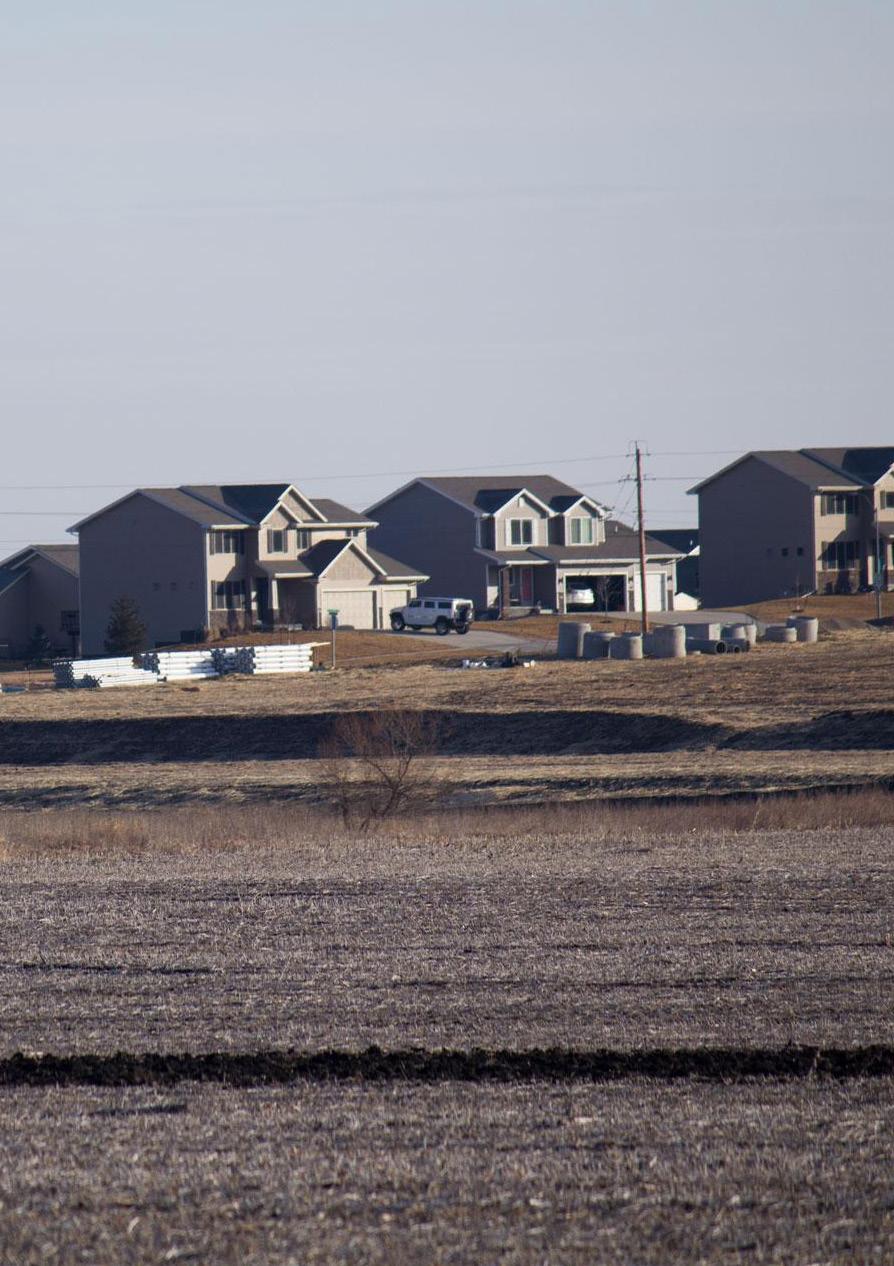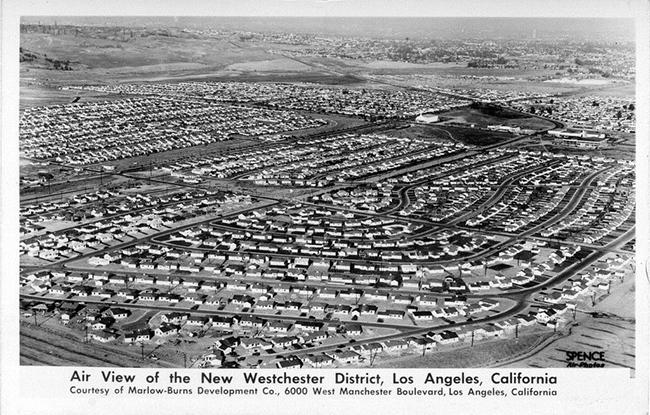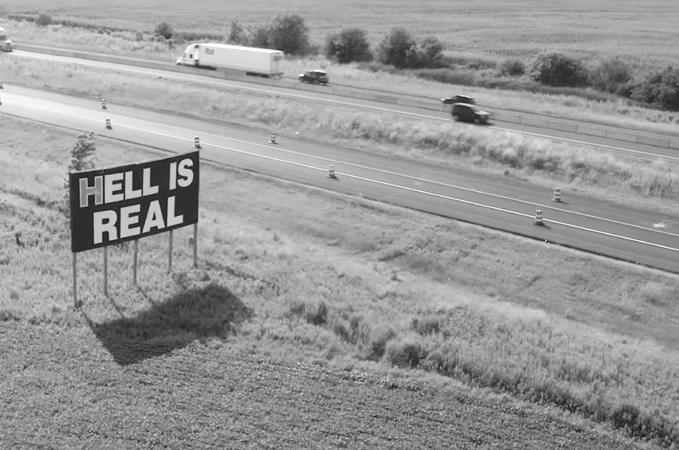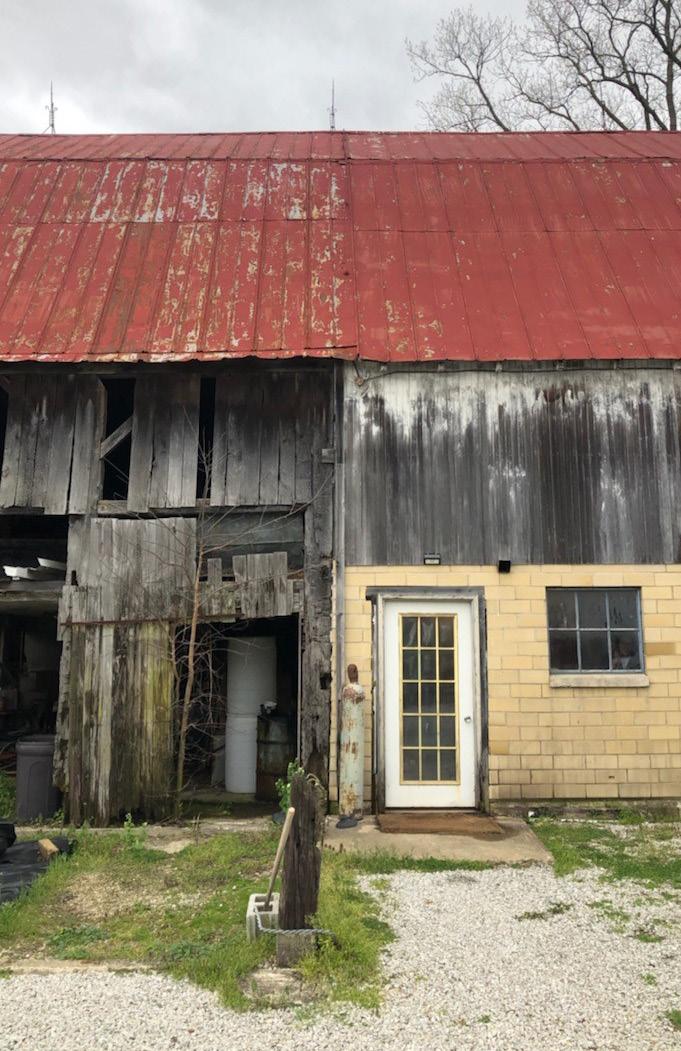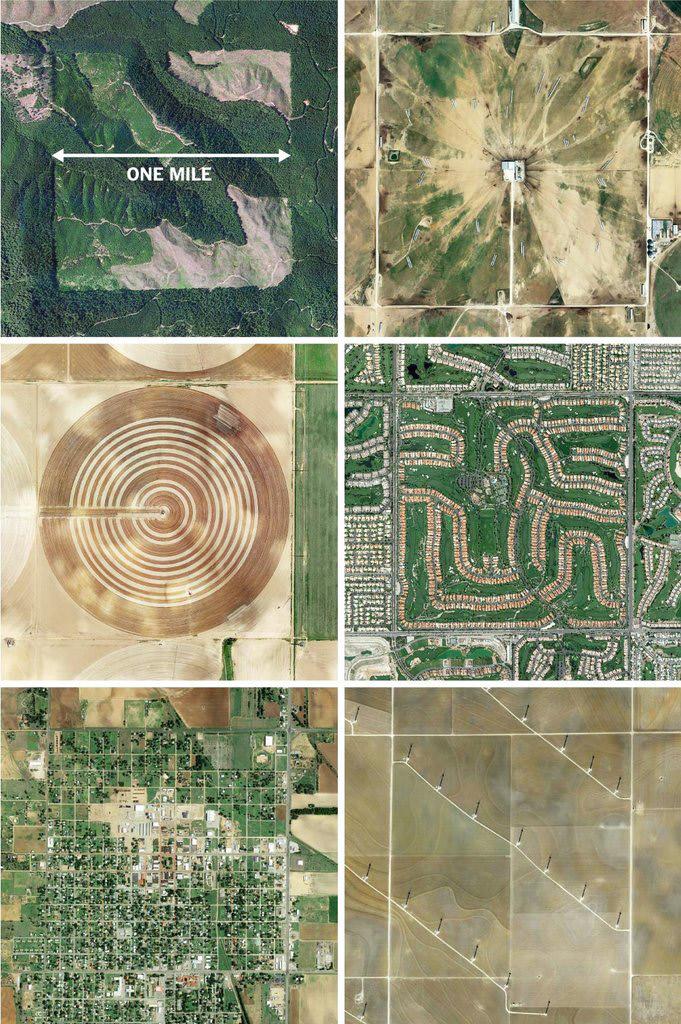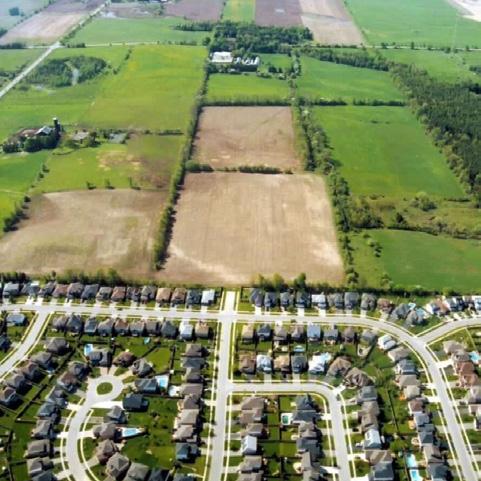
10 minute read
2.3 - Get Big or Get Out
from Residual Farmland
by clareknecht
By the 1980s those who could not get big, got out of agriculture. At this point agriculture became agro-industrial. Mass production rather than mass diversification became the goal. Most of the smaller family-owned parcels have been gobbled up by larger farms and ranchers and by speculators from places away. People no longer rely on driving to their local market to sell eggs, chicken or cream; nor do they come to buy socks, shoes, or invisible tape. The fascination with the automobile has led to the obsession with driving twenty-five minutes each way, many times a week. This weekly, if not daily, ritual is mirrored by the daily commute of inhabitants to and from work, by school buses traveling over and across wide expanses of land to pick up a handful of kids, and by the winds blustering through tassels of corn. Two thirds of the Midwest is farmland, a 17% decline since 1950. This change occurred because many marginal lands were shifted to other uses such as forestry or recreation, some were flooded for reservoirs or were converted to highways and urban developments. The Midwest accounts for 21% of the nation’s land area, 29% of its farmland, and a disproportionate 47% of the nation’s crop land, but the region produces only 36% of the agricultural market of national product sold because most mid-western farmers grow relatively low value crops such as corn and soybeans. The key to the early growth of mid-western cities was the size and richest of the agricultural resource space. Throughout the evolution of the present pattern of Midwest urbanization, two factors – great migrations and major changes in transportation technology – have exercise major influences on the location of the metropolitan areas.
This next section is a part of the Science Tuesday feature series on the USDA blog.
Advertisement
There are two major inputs which heavily effect the changing market of agriculture which have significantly decreased over time: land and labor. Between 1982 and 2007, land used in agriculture dropped from 54 to 51% of total U.S. land area, while farming used 30% less hired labor and 40% less operator labor. Yet farmers managed to increase output by nearly 50%. The reason: increases in productivity from the adoption of new technologies, more intensive use of manufactured inputs, such as fertilizers, and the efficiencies gained as farm production shifted to larger, more specialized operations. Agricultural production is a major use of land, accounting for roughly 52 percent of the U.S. land base.) Land use and land-use changes have important economic and environmental implications for commodity production and trade, open space, soil and water conservation, air quality and atmospheric greenhouse gas concentrations, and other areas of policy relevance. With a value of $2.51 trillion in 2018, the value of farm real estate (land and structures) accounted for over 80 percent of the total value of U.S. farm sector total assets. (See more on farm assets and debt, including real estate.) Because real estate comprises such a significant portion of the balance sheet of U.S. farms, farmland and real estate values are critical barometers of the farm sector’s financial performance. Changes in farmland values also affect the financial well-being of agricultural producers because farm real estate is the largest single component in a typical farmer’s investment portfolio and it serves as the principal source of collateral for farm loans.
Is it this extreme money making machine that draws in larger corporations which take over the working class’s generations of practice in farming. The following exposition by Chris McGreal in The Guardian from March 2019 shares the details of a dying family trade in rural Iowa.
When the vast expanse of rural Iowa was carved up for settlers in the 19th century, it was often divided into 160-acre lots. Four farms made a square mile, with a crisscross of dead-straight roads marking the boundaries like a sprawling chess board. Within each square, generations of families tended pigs and cattle, grew oats and raised children, with the sons most likely to take over the farm. That is how Barb Kalbach saw the future when she left her family’s land to marry and begin farming with her husband, Jim, 47 years ago.
“When we very first were married, we had cattle and calves,” she says. “We raised hogs from farrow to finish, and we had corn, beans, hay and oats. So did everyone around us.”
Half a century later, Kalbach surveys the destruction within the section of chessboard she shared with other farms near Dexter in southwestern Iowa.
Barb and Jim are the last family still working the land, after their neighbors were picked off by waves of collapsing commodity prices and the rise of factory farming.
With that came a vast transfer in wealth as farm profits funneled into corporations or the diminishing number of families that own an increasing share of the land. Rural communities have been hollowed out.
And while the Kalbachs have hung on to their farm, they long ago abandoned livestock and mixed arable farming for the only thing they can make money at any more – growing corn and soya beans to sell to corporate buyers as feed for animals crammed by the thousands into the huge semi-automated sheds that now dominate farming, and the landscape, in large parts of Iowa.
[Image 12] Barb Kalbach on the land she and her husband farm. Photograph: Scott Morgan/The Observer
Kalbach comes from five generations of farmers and suspects she may be the last. As she drives the roads around her farmhouse, she ticks off the disappearances.
“That’s the Shoesmiths’ place,” she said. “Two years ago, it had cattle, pigs and pasture.”
Now the land is rented out and is all given over to corn. A little further along, the Watts family’s farmhouse stands empty, its roof falling in. There are a few relics of the old farm at the place that used to be owned by the Williamses – an abandoned hen house and a bit of machinery – but the land is all corn and soya beans. The Denning house, on Walnut Avenue, was bulldozed after the land was sold and rolled into a bigger operation.
“They’re all gone now. My county has 11 small towns, and it’s almost like I could look back in slow motion and just see the businesses change and disappear. We’ve become poorer. Our communities are basically shattered and in more than just an economic way – in a social way too.”
[Image 13] Across the state, farmhouses where generations grew up lie abandoned. Photograph: Scott Morgan/The Observe

This collapse has in good part been driven by the rise of concentrated animal feeding operations, or Cafos. In these industrial farming units, pigs, cows and chickens are crammed by the thousand into rows of barns. Many units are semi-automated, with feeding run by computer and the animals watched by video, with periodic visits by workers who drive between several operations.
In the early 1970s, US agriculture secretary Earl Butz pushed the idea of large-scale farming with the mantra “get big or get out”. He wanted to see farmers embrace what he regarded as a more efficient strategy of growing commodity crops, such as corn and soya beans.
Some farmers invested heavily in buying land and new machinery to increase production – taking on large amounts of debt to do so. A decade later, the farm crisis hit as overproduction, the US grain embargo against the Soviet Union and high interest rates dramatically drove up costs and debt for family farms. Land prices collapsed and foreclosures escalated.
“Every blow to independent farming made it more of an opportunity for large corporations to come in,” said Partridge.
Local seed and equipment suppliers shut up shop because corporations went straight to wholesalers or manufacturers. Demand for local vets collapsed. As those businesses packed up and left, communities shrank. Shops, restaurants and doctors’ surgeries closed. People found they had to drive for an hour or more for medical treatment. Towns and counties began to share ambulances. As factory farms spread, their demands dictated the workings of slaughterhouses. Smaller abattoirs, which offered choice and competitive prices to family farmers, disappeared, to be replaced by huge operations that were further away and imposed lower prices on small-scale breeders such as the Kalbachs. In 1990, small and medium-sized farms accounted for nearly half of all agricultural production in the US. Now it is less than a quarter.
As the medium-sized family farms retreated, the businesses they helped support disappeared.
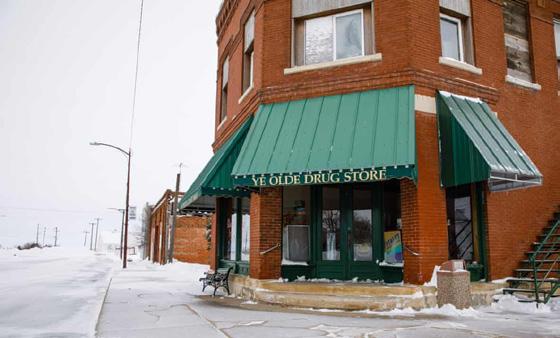
“By the time you paid to transport the extra distance, they were paying you less than they paid the corporations because you weren’t bringing the big numbers,” says Kalbach. The buying power of the Cafos also helps drive farmers’ decisions on which crops to grow. With no livestock, the Kalbachs were forced into growing corn and soya beans to sell to factory farms as animal feed or to corporations for ethanol. [Image 14] Communities are seeing business and services close down. Photograph: Scott Morgan/The Observer
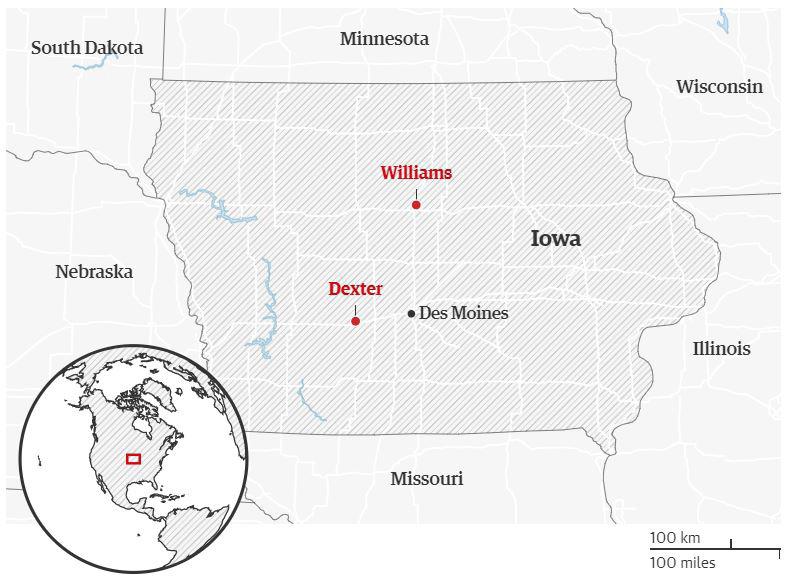
[Image 15] Map from orginal article highlighting locations discussions in reading.
economic shocks has blended with government policies to create a “monopolization of the livestock industry, where a few multinational corporations control a majority of the livestock”.
Iowa is not alone. Missouri, to the south, had 23,000 independent pig farmers in 1985. Today it has just over 2,000. The number of independent cattle farms has fallen by 40% over the same period. Tim Gibbons of Missouri Rural Crisis Center, a support group for family farmers set up during the 1980s farm crisis, says the cycle of...
Gibbons explains: “They are vertically integrated, from animal genetics to grocery store. What they charge isn’t based on what it costs to produce, or even supply and demand - they know what they need to profit.
What they have done, through government support and taxpayer support, is to intentionally overproduce so that the price stays low, sometimes below the cost of production. That kicks their competition out of the market. Then they become the only player in town.
“Over time, it has extracted wealth and power from communities. We can see how that has impacted rural main streets. You can see the boarded-up storefronts. You can see the lack of economic opportunity.”
Gibbons says that corporations game the system by obtaining low-interest, federally guaranteed loans to build Cafos that then overproduce. But they know the government will buy up the surplus to stabilize prices.
“The system has been set up for the benefit of the factory farm corporations and their shareholders at the expense of family farmers, the real people, our environment, our food system,” he adds.
“The thing that is really pervasive about it is that they control the rules of the game because they control the democratic process. It’s a blueprint. We’re paying for our own demise.
“It would be a different argument if it was just based upon inevitability or based on competition. But it’s not based upon competition: it’s based upon squelching competition.”
Yet few of the economic benefits spill down to the communities around them. Workers are often poorly paid; many are bussed in. That they often include immigrants has sharpened the criticism from men like Nick Schutt, who used to work at Iowa Select, driving pigs in livestock trucks and handling sows. He says he earned $23,000 a year for 12-hour days and no overtime. Barb Kalbach is not optimistic about the future. Her son will not be taking over the farm. She hopes the land will stay in the family for at least another generation, but expects it to be rented out and subsumed into some larger operation. But Kalbach fears something bigger than the loss of her own farm. Farmers are ageing and their children either have little interest in working the land or cannot afford the sophisticated equipment needed to compete with corporations.
“Investors buy the land, and they have tractors and combines that you can run by computer,” she said. “They’ll hire somebody to sit in a little office somewhere and run that stuff off the computer and farm the land that way. Now what you’ve done is you have lost the innate knowledge of how to grow food and raise animals. You’ve lost a whole generation of it, probably two. Now we are going to rely on a few corporations to decide who is going to eat and who isn’t. We’re one generation away from that picture right now.”
In Williams, Schutt says he’s seeing a community of owners become workers and relates it to being like Russia with serfs.
If you want to work on a farm, you’ll have to work for them. Kalbach agrees. “I think [small farms] are done,” she said.
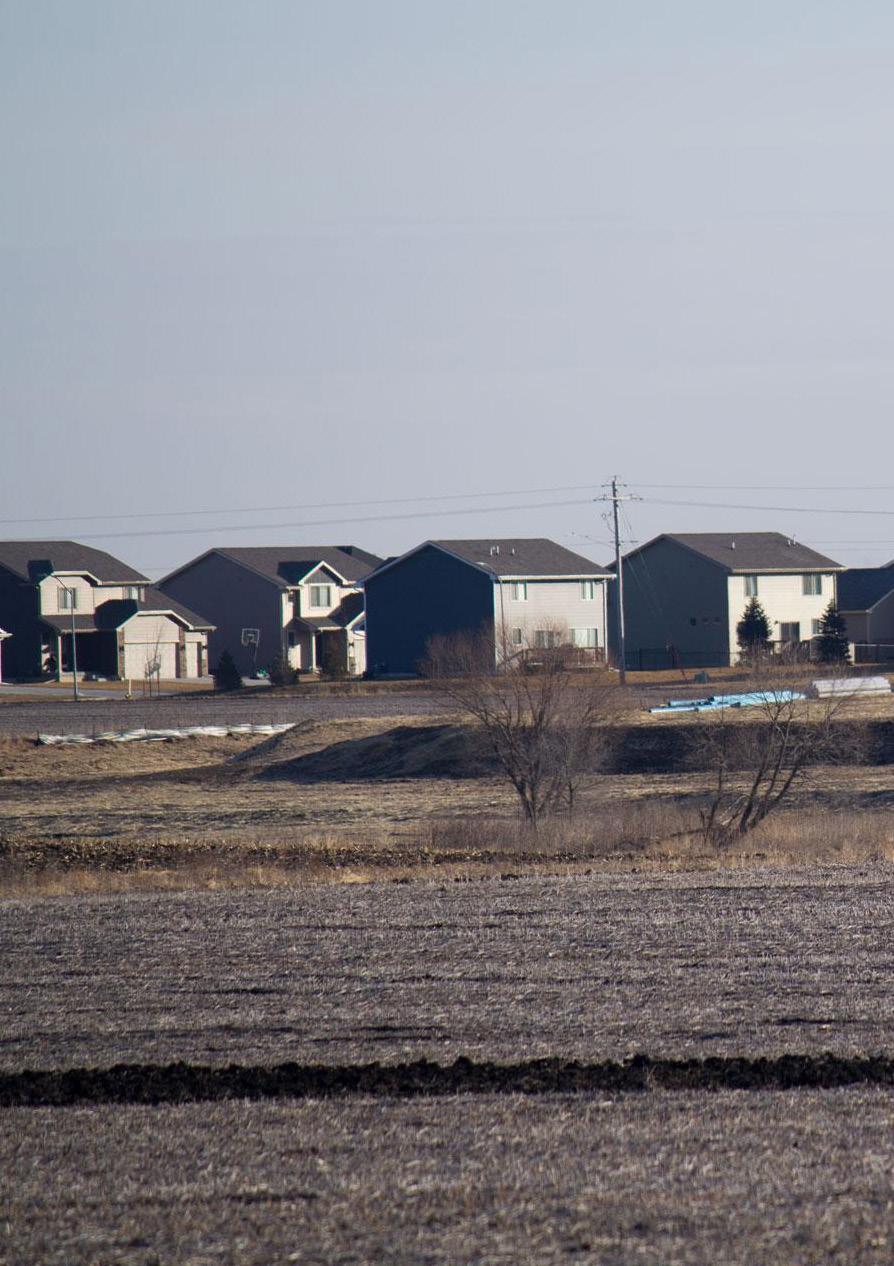
3
CHAPTER
